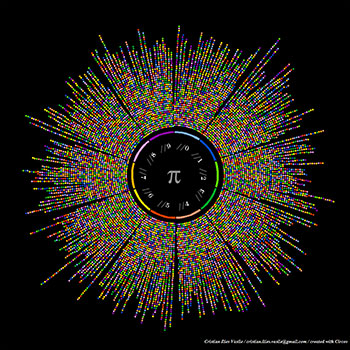#f''(x)=0#
#f(x)=x^2*e^(x)#
#f'(x)=2*x*e^x+x^2*e^x#
#f''(x)=2*e^x+2*x*e^x+2*x*e^x+x^2*e^x=#
#=e^x(2+4*x+x^2)#
#f''(x)=0# #<=># #2*e^x(1+x+x^2)=0#
Remember that #e^x# is always* positive
#=> (1+x+x^2)=0#
#x_(1,2) = \frac{-b \pm \sqrt{b^2 - 4ac}}{2a}#
#x_(1,2) = \frac{-4 \pm \sqrt{4^2 - 4*2*1}}{2*1}=#
#=\frac{-4 \pm \sqrt{16 - 8}}{2}=#
#=\frac{-4 \pm \sqrt{8}}{2}=#
#=\frac{-4 \pm 2\sqrt{2}}{2}=#
#=-2 \pm \sqrt{2}#
#x_1=-2 +\sqrt(2)=-0.59#
#x_2=-2 -\sqrt(2)=-3.41#
now you have 3 intervals:
1. #(-infty,x_2)#
2. #(x_2,x_1)#
3. #(x_1,infty)#
ask yourself if #f''(x)# is positive or negative on each interval:
(choose a number of the interval and calculate the value,
don't choose #x_1# or #x_2# because there is 0 as we calculated before).
1. #(-infty,-3.41)# #x=4, f''(-4)>0#
2. #(-3.41,-0.59)# #x=-1, f''(-1)<0#
3. #(-0.59,infty)# #x=0, f''(0)>0#
if #f''(x)>0# #=> f(x)# is convex
if #f''(x)<0# #=> f(x)# is concave
convex interval: #(-infty,-3.41)uu(-0.59,infty)#
concave interval: #(-3.41,-0.59)#
*#lim_(x->-infty) f''(x)=0# (we are looking for #abs(x) < infty#)

